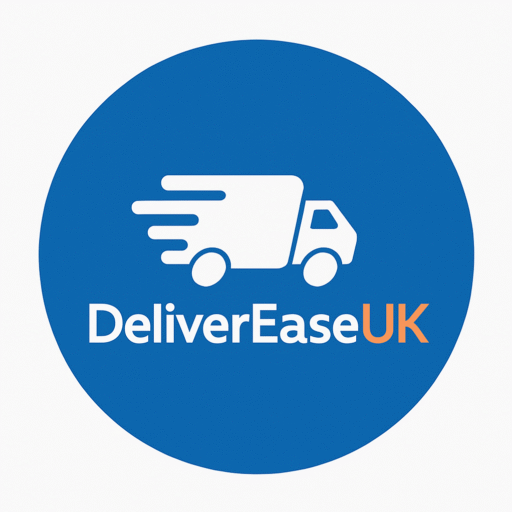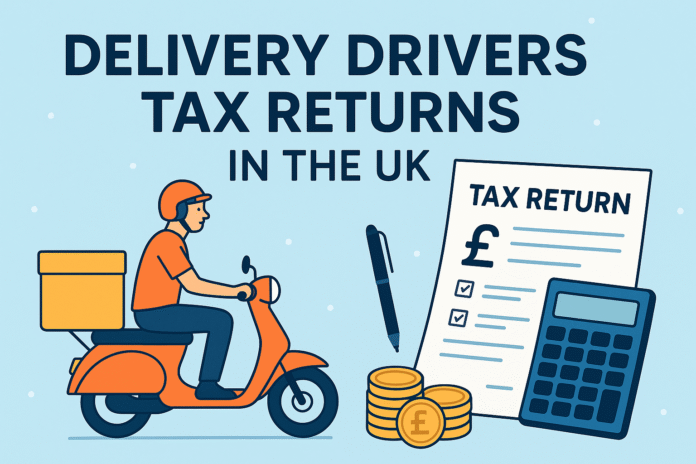Delivery Driver Tax Returns in the UK
The Easy Guide
If you’re a delivery driver in the UK – whether for Deliveroo, Uber Eats, Amazon Flex, Evri, Just Eat, or your own courier business – you’re classed as self-employed. That means you’re the boss of your own mini-business.
And when you’re the boss, you have to tell the taxman (HMRC) how much you earned, how much you spent, and then pay the right amount of tax. This is called a Self Assessment tax return.
Let’s break it all down nice and simple.
Part 1: The Basics – What is a Tax Return?
Imagine you have a piggy bank.
Every time you deliver food or parcels, money goes into your piggy bank. That’s your income.
But sometimes you need to spend money to keep earning – like petrol, insurance, or fixing your car. That’s your expenses.
At the end of the year, you tell HMRC:
“Here’s all the money I made.”
“Here’s all the money I spent to do my job.”
“This is what’s left over.”
HMRC then works out how much tax you owe on that leftover amount (called profit).
Part 2: When Do You Need to Do It?
The tax year in the UK goes from 6th April to 5th April the next year.
Example: 6 April 2024 → 5 April 2025.
You must:
Register as self-employed with HMRC if you’ve never done a tax return before.
File your tax return by 31st January after the tax year ends.
(So, for 2024/25, the deadline is 31 January 2026.)
Pay your tax bill by the same date.
Part 3: What Taxes Do You Pay?
As a delivery driver, you’ll normally pay three things:
Income Tax – a percentage of your profit.
National Insurance – a smaller tax that helps fund NHS, pensions, etc.
Possibly Payments on Account – advance payments towards next year’s tax bill (this confuses a lot of drivers).
Income Tax (2024/25 rates)
First £12,570 profit = tax-free (Personal Allowance).
Next chunk (up to £50,270) = 20% tax.
Higher than that = 40% tax (most drivers don’t reach this, but some full-timers might).
National Insurance (Class 4 & Class 2)
If profit is more than £12,570, you pay Class 4 NI = 8% (between £12,570–£50,270).
Class 2 NI is being phased out, but some years you may still pay a small flat amount.
Part 4: What Counts as Income?
Pretty much any money you earn from deliveries.
Examples:
Weekly payments from Deliveroo, Uber Eats, Just Eat, Evri, Amazon Flex, etc.
Tips (yes, tips count as income).
Your own courier jobs if you work directly with clients.
Part 5: What Expenses Can You Claim?
This is the part that saves you money .
Expenses are the things you spend money on to do your delivery job.
The more you claim, the lower your profit, and the less tax you pay.
Common Delivery Driver Expenses
Fuel / Electric charging
Car/van/bike insurance (if used for work)
Road tax & MOT
Repairs & servicing
Parking & tolls
Car washes (reasonable ones, not luxury detailing every week!)
Protective clothing (like high-vis jackets, gloves, helmet)
Mobile phone & data plan (if used for apps like Uber Eats/Deliveroo)
Delivery bags & equipment
Accountancy fees / bookkeeping software
Part 6: The Easy Option – Mileage Allowance
Instead of claiming actual fuel, repairs, insurance etc., you can use HMRC’s mileage rate:
45p per mile (for first 10,000 miles)
25p per mile (after 10,000 miles)
This is easier because you only need to track how many miles you drove for work (not every receipt).
Example:
12,000 miles in a tax year →
10,000 × 45p = £4,500
2,000 × 25p = £500
Total = £5,000 you can claim as expenses.
Part 7: Keeping Records (Don’t Get Caught Out!)
HMRC can ask for proof, so you need to keep records for at least 5 years.
You should keep:
Payslips/statements from Uber Eats, Deliveroo, etc.
Fuel receipts (if not using mileage method).
Repair/MOT invoices.
Phone bills.
Bank statements.
Mileage log (if using mileage method).
Pro tip: Use apps like QuickBooks, Xero, or even a simple spreadsheet.
Part 8: Example Calculation (Made Super Simple)
Let’s say you did deliveries in 2024/25:
Income: £28,000
Expenses (mileage method, 10,000 miles): £4,500
Profit = £23,500
Now tax:
First £12,570 = tax free.
£23,500 – £12,570 = £10,930 taxable.
20% of £10,930 = £2,186 Income Tax.
National Insurance:
Profit above £12,570 = £10,930.
8% × £10,930 = £874.
Total tax bill = £3,060.
Part 9: How to File Your Tax Return
Register as self-employed on HMRC website. You’ll get a Unique Taxpayer Reference (UTR).
Log into Government Gateway account.
Fill in your income and expenses.
HMRC calculates your tax.
Pay your bill by 31 January.

